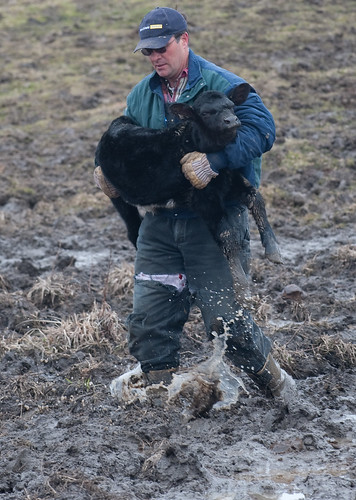Consumers are growing more curious about how their food is produced and it seems that anti-agriculturist groups are taking full advantage of this by spreading negative, inaccurate information about agriculture. I was browsing the web this afternoon and found a quote from a blog titled, Guide to Good Food: Factory Farming and Industrial Agriculture:
“Factory farming and industrial agriculture are unsustainable systems that produce large volumes of food but have little to no regard for the environment, animal welfare, soil and water quality, food safety, worker rights, farmers or local communities. That focus is on maximizing profit and efficiency- but at great cost.” Source-http://takepart.com/news/2009/04/03/guide-to-good-food-factory-farming-and–industrial-agriculture/
First of all, cattle producers have a deep respect for the land and want to make sure that their family farm and land is sustainable, so it can be passed to future generations. They do this by implementing practices such as soil nutrient management plans, using trees and fences to protect natural streams, planting trees, practicing rotational grazing, and enriching wildlife habitats. Did you know that grazing area in the US more than doubles the area that could be used to produce food while limiting soil erosion, preserving wildlife habitat and reducing the risks of wildfires? Beef produced in the US is under strict compliance with federal, state, and local environmental regulations. This includes the Clean Air and Water Acts.
You may be asking now, “So what about feedlots?”. Most cattle in the US are finished in feedlots or concentrated animal feeding operations. Feedlots have become the focus for many critics when they talk about “factory farming”. Feedlots allow us to produce more pounds of beef using fewer resources like land, feed and water. Large feedlots have Environmental Engineers on staff to make sure that the operation is under compliance with the EPA (environmental protection agency) who govern these types of operations. Part of this persons job is to make sure that manure is managed correctly and water quality is protected. All feedlots must submit an annual report and develop a plan for handling waste.
This is the area most consumers fail to recognize, not because it is their fault, but because they haven’t been presented with the information.
Remember, above all beef producers have the consumer in mind. Our goal is to produce a safe, wholesome and nutritious product…for YOU!

